00:00
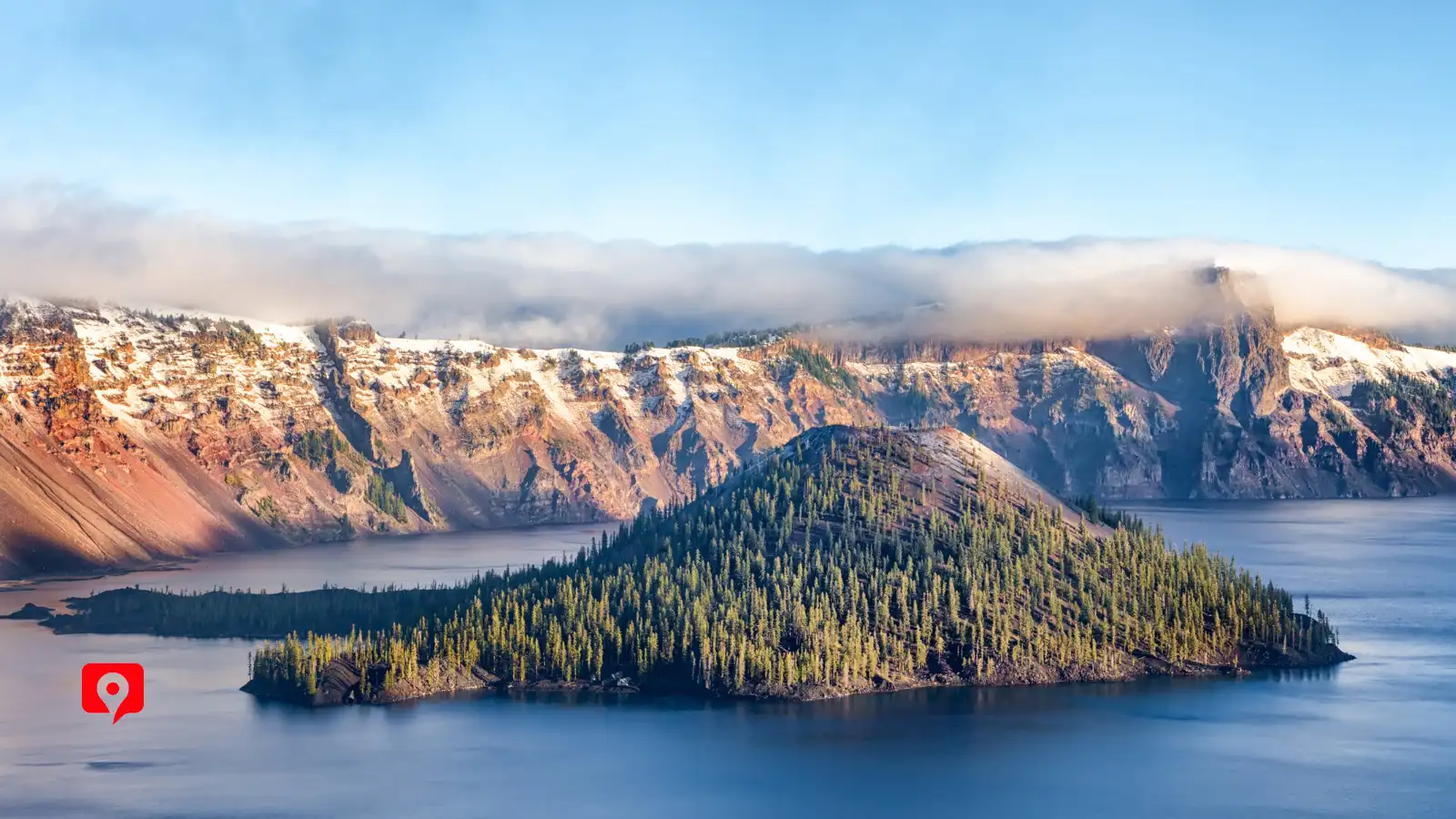
Crater Lake National Park in Oregon, renowned for its deep-blue lake—the deepest in the U.S.—attracts visitors with its dramatic landscapes and tranquil waters. The park offers diverse activities including hiking at notable sites like Watchman Peak Trail and the Pinnacles Overlook. Boat tours and scenic drives around the rim enhance the experience with stops at Rim Village, Vidae Falls, and Phantom Ship Overlook, providing intimate views of the lake’s geology and expansive landscapes.
The network of trails through varied ecosystems offers educational insights into the region’s unique flora and fauna, enriching the hiking experience. As a place of solitude, Crater Lake’s minimal human impact and secluded setting foster tranquility, allowing visitors to enjoy the silence, appreciate stunning views, and occasionally spot wildlife, making it an essential sanctuary for nature lovers and those seeking personal renewal.
Traveling to Crater Lake National Park in Oregon requires careful planning by car or air. Situated in a dramatic volcanic landscape, the journey offers stunning views and a serene escape into nature, captivating visitors with its deep blue lake and tranquil atmosphere.
Rogue Valley International-Medford Airport (MFR), located near Medford, Oregon, is the primary gateway for visitors to Crater Lake National Park, about 1.5 to 2 hours away by car. Additional airports include Klamath Falls Airport, roughly an hour’s drive, and Portland International Airport (PDX), approximately 4.5 hours away. These airports provide a range of travel options, including car rentals, shuttle services, and bus routes, ensuring easy access to the park.
Driving offers a convenient and quick way to access Crater Lake National Park. From Rogue Valley International-Medford Airport, simply take Highway 62 directly to the park’s West Entrance, a scenic drive of about 1.5 to 2 hours. Similarly, from Klamath Falls Airport, the journey via Highway 97 to Highway 62 takes approximately an hour to the South Entrance. These routes provide direct access to the park under normal traffic conditions. Once at Crater Lake, there are ample parking areas near major viewpoints and trailheads.
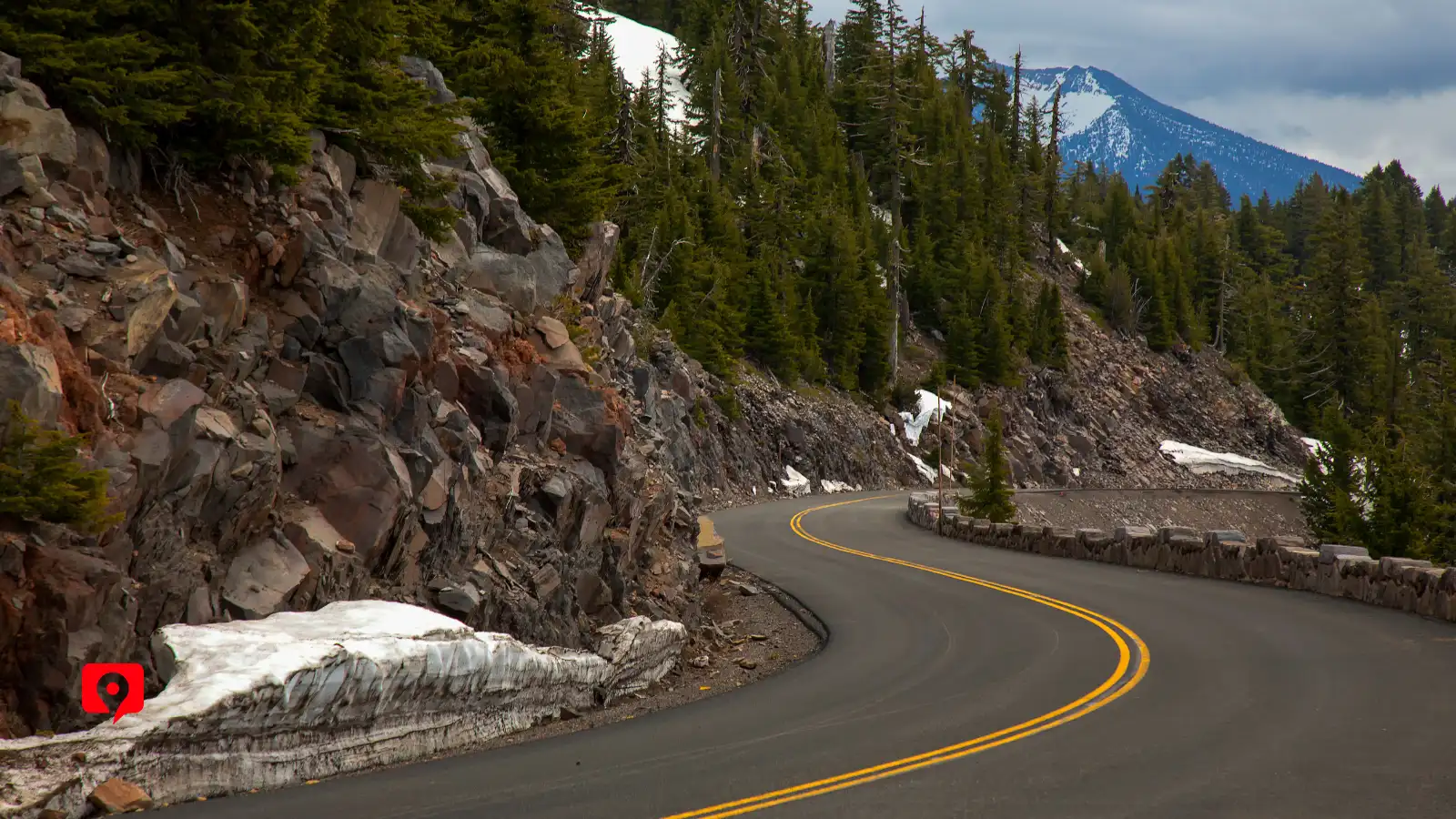
Getting Around
Driving offers a convenient and quick way to access Crater Lake National Park. From Rogue Valley International-Medford Airport, simply take Highway 62 directly to the park’s West Entrance, a scenic drive of about 1.5 to 2 hours. Similarly, from Klamath Falls Airport, the journey via Highway 97 to Highway 62 takes approximately an hour to the South Entrance. These routes provide direct access to the park under normal traffic conditions. Once at Crater Lake, there are ample parking areas near major viewpoints and trailheads.
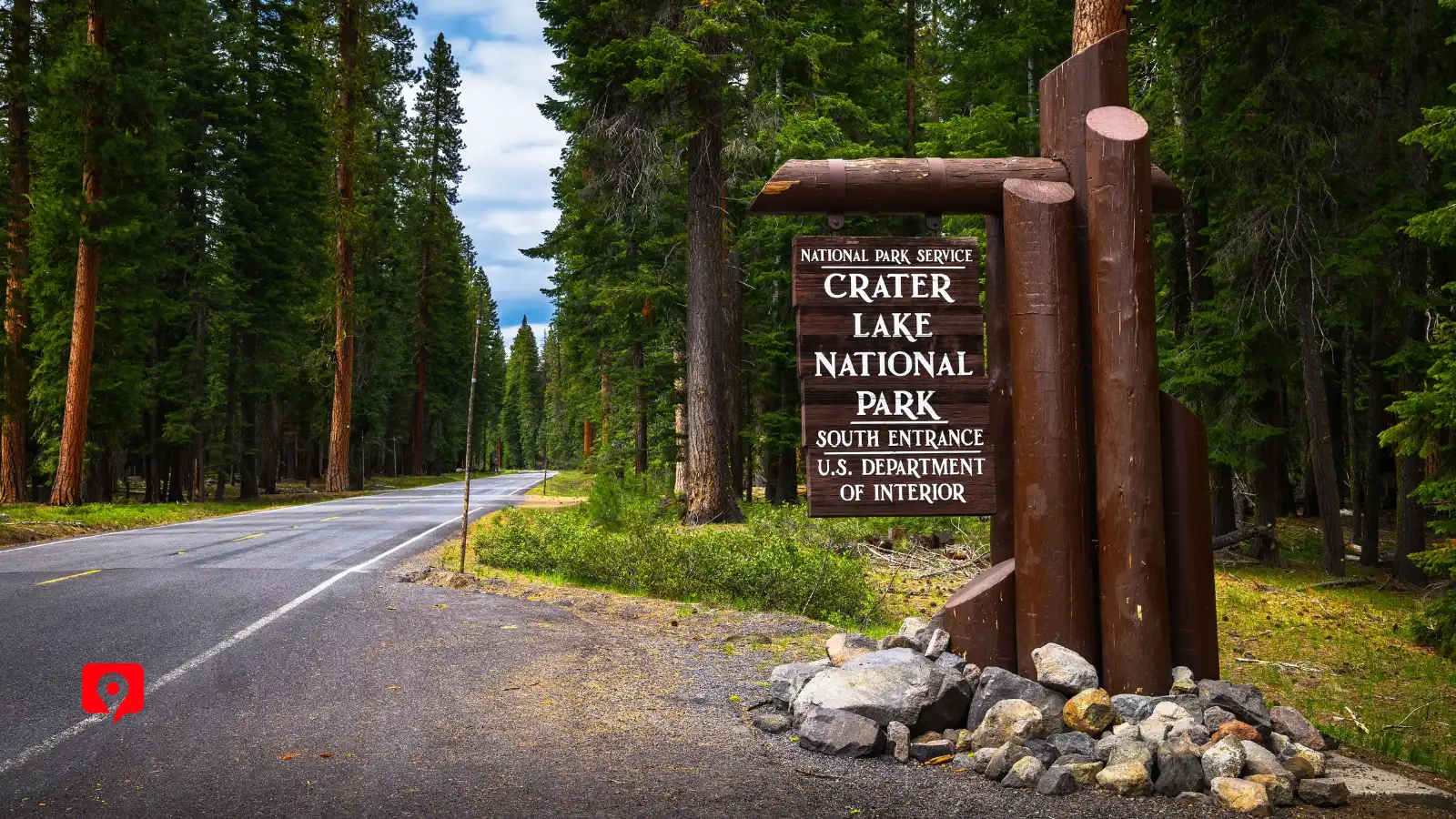
Entrance Fees
Driving offers a convenient and quick way to access Crater Lake National Park. From Rogue Valley International-Medford Airport, simply take Highway 62 directly to the park’s West Entrance, a scenic drive of about 1.5 to 2 hours. Similarly, from Klamath Falls Airport, the journey via Highway 97 to Highway 62 takes approximately an hour to the South Entrance. These routes provide direct access to the park under normal traffic conditions. Once at Crater Lake, there are ample parking areas near major viewpoints and trailheads.
Inside the Park
For a truly immersive experience, consider staying within the park itself. Perched on the rim of the caldera, the historic Crater Lake Lodge offers unparalleled views and a classic, rustic ambiance.
However, due to its popularity and limited capacity, rooms often get booked far in advance. If you’re looking for a more budget-friendly option or prefer a quieter setting, The Cabins at Mazama Village, located about 7 miles south of the rim, provide comfortable lodging in a more secluded environment.
Outside the Park
Within a short drive of Crater Lake, you’ll find several inviting options. Union Creek Resort, about 21 miles west, provides cozy rooms and cabins with a rustic charm. A bit further north, Diamond Lake Resort offers a wider range of amenities, including a restaurant, store, and gas station, making it a good choice for families or those seeking additional services. For a touch of history, the Prospect Hotel, 26 miles west, boasts charming rooms and a renowned restaurant in a picturesque setting.
Camping
For those who prefer sleeping under the stars, Crater Lake National Park offers one campground within its boundaries: Mazama Campground. Located near Mazama Village, this campground has over 200 sites suitable for both tents and RVs. 1 Amenities include restrooms, drinking water, and fire rings. 2 It’s important to note that reservations are highly recommended during peak season (June through September), as sites fill up quickly.
The best time to visit Crater Lake National Park is from late spring to early fall, typically between June and September. During this period, the park’s roads, including Rim Drive, are fully open, and the weather is ideal for outdoor activities. In late spring and early summer, snow begins to melt, revealing trails and transforming the landscape with vibrant wildflowers. However, some higher elevations may still have snow lingering into June.
Summer, from July to September, is the most popular season. Warm, sunny days and clear skies provide perfect conditions for hiking, boat tours, and exploring iconic viewpoints like Watchman Peak and Rim Village. All visitor facilities and campgrounds are fully operational, ensuring a comfortable experience.
In early fall, cooler temperatures and fewer crowds make the park a serene retreat. The crisp air and golden hues of the foliage create a stunning backdrop, making this season particularly appealing for photographers and nature enthusiasts.
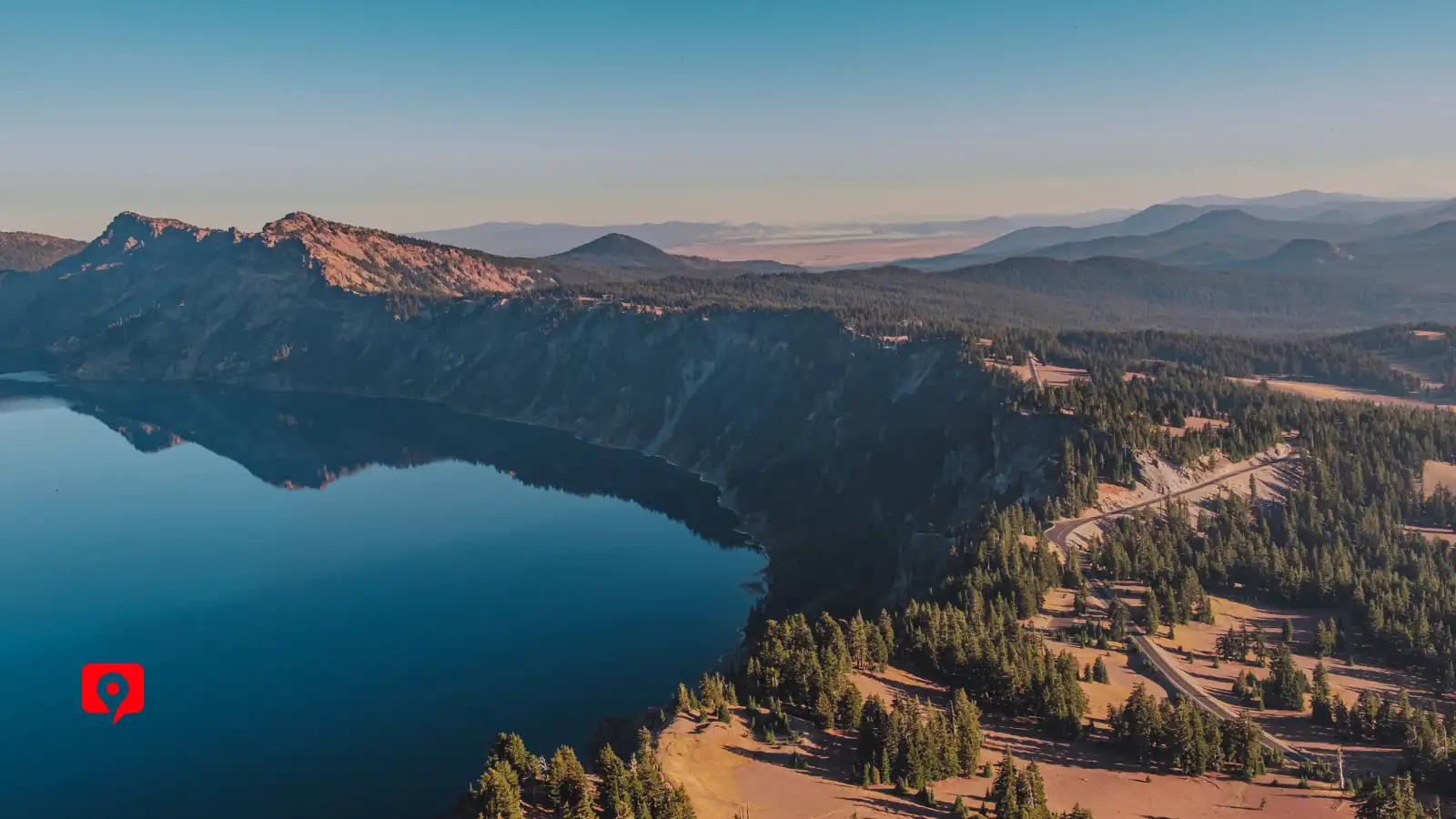
Visiting Crater Lake National Park can take anywhere from a few hours to a full day or more, depending on your interests. If you’re short on time, a half-day visit allows you to drive the 33-mile Rim Drive, stopping at key viewpoints like Rim Village, Watchman Peak, and Phantom Ship Overlook. You can also explore a short trail like Pinnacles Overlook or Vidae Falls.
For a full-day visit, you can add activities such as hiking the Watchman Peak Trail or Cleetwood Cove Trail, where you can access the lake shore or take a boat tour. This extra time also lets you fully enjoy the park’s scenic beauty and its quieter spots.
If you have multiple days, you can explore more trails, enjoy stargazing, or venture into the park’s backcountry. The time needed depends on how deeply you wish to explore, but even a few hours offer a rewarding experience at this stunning natural wonder.
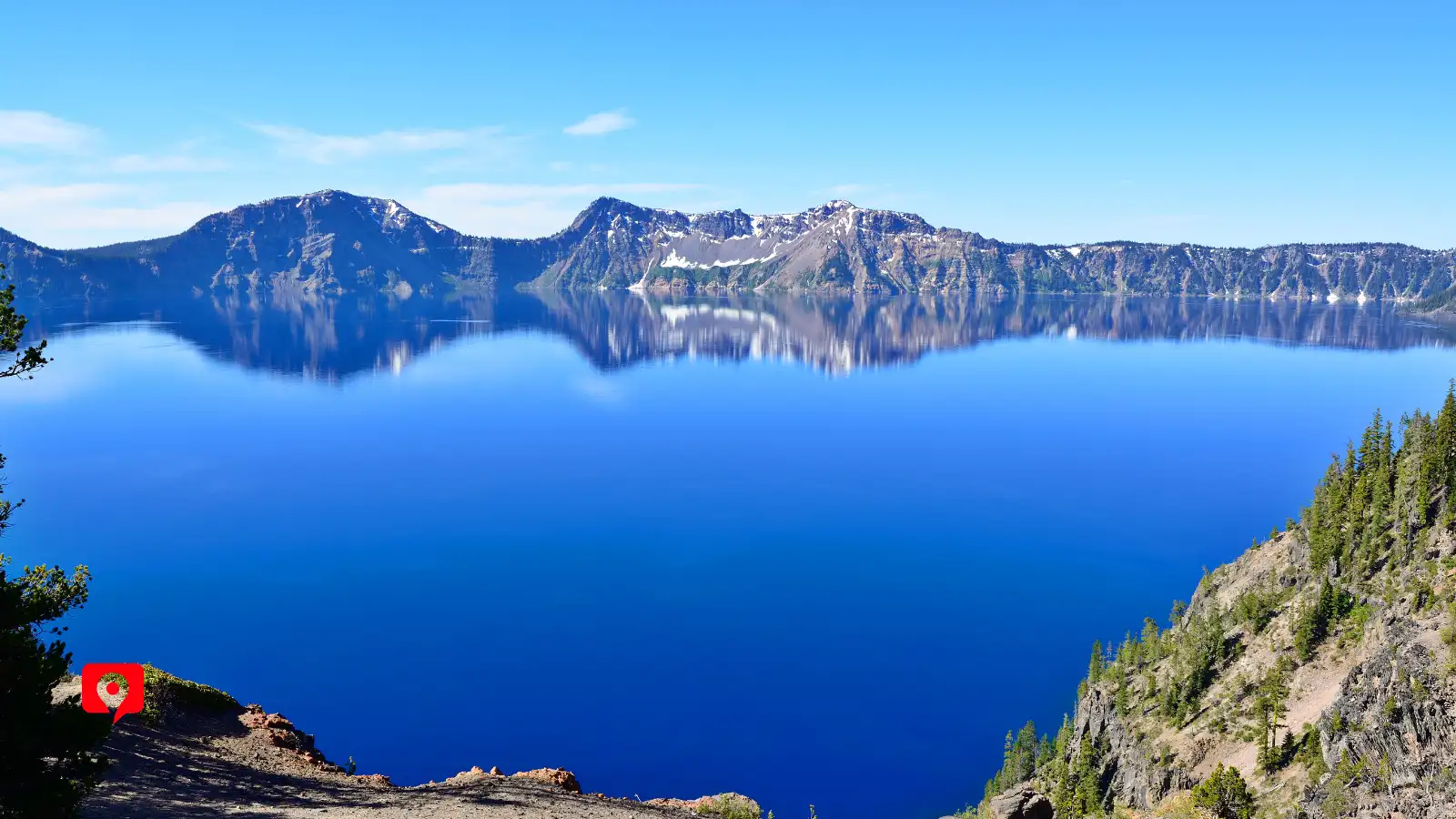
To experience the tranquility of Crater Lake National Park, plan your visit during off-peak times. The shoulder seasons, such as late spring (June) or early fall (September to early October), offer mild weather, fewer visitors, and unobstructed views of the lake and its iconic attractions. Weekdays are typically quieter than weekends, even during the peak summer months.
Start your day early to enjoy popular spots like Rim Village, Watchman Peak, or Phantom Ship Overlook before crowds arrive. Alternatively, explore less-visited areas such as the Pinnacles Overlook or Vidae Falls for a more peaceful experience. Consider venturing onto lesser-traveled trails or taking a boat tour during non-peak hours for a quieter connection with the park.
Avoid visiting during holiday weekends or mid-July to August, the park’s busiest period. Exploring via scenic drives or cycling Rim Drive can also provide a serene alternative to crowded hiking trails.
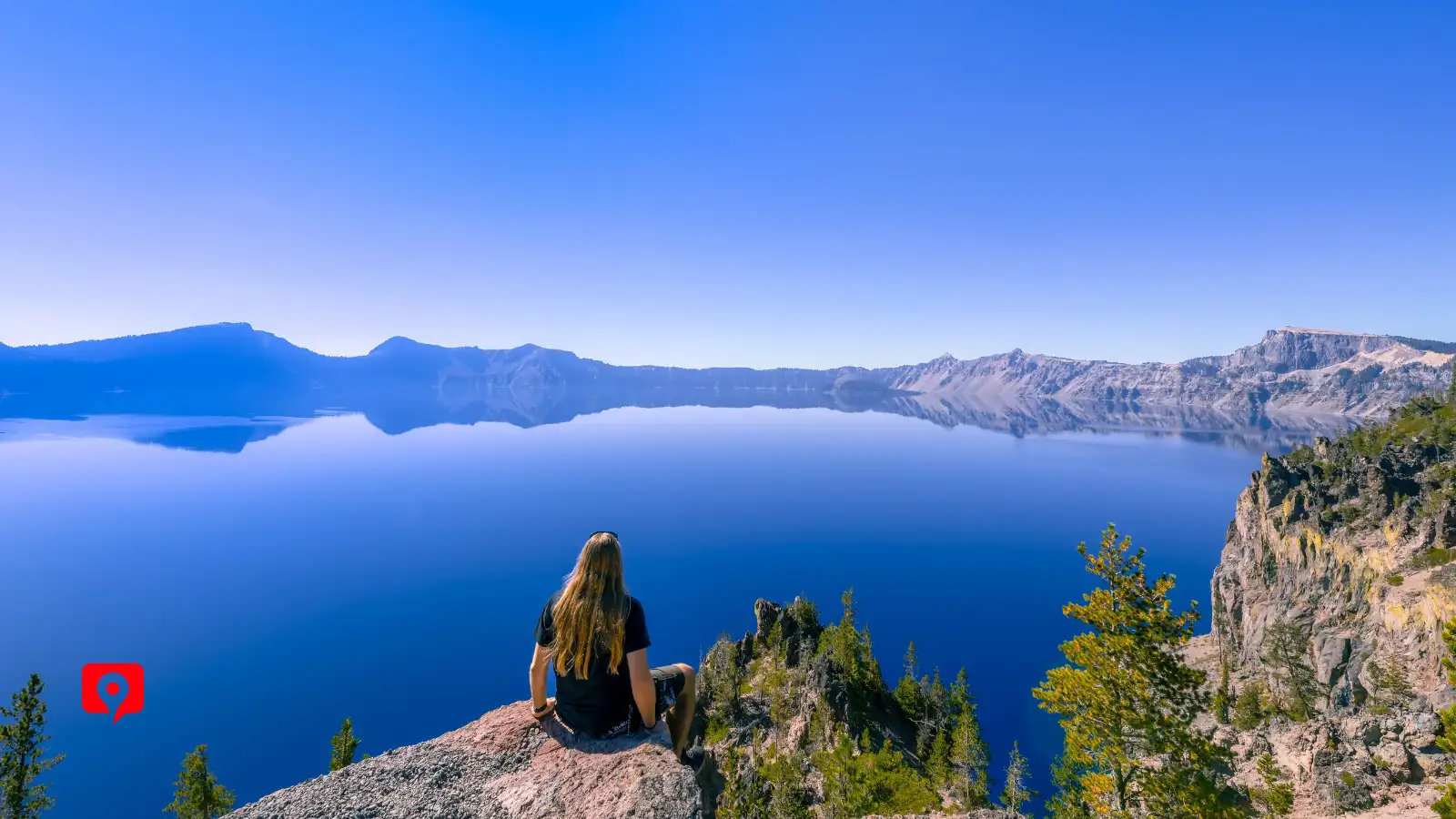
Phantom Ship Overlook
Phantom Ship Overlook offers a mesmerizing view of a unique natural formation in Crater Lake National Park. Named for its eerie resemblance to a ghostly ship, especially in foggy conditions, this island of ancient volcanic rocks stands out against the deep blue waters of Crater Lake. The jagged spires and cliffs, formed from andesite and basalt, have been sculpted by centuries of erosion, presenting a captivating sight that highlights the dynamic history of the park’s geological features.
Vidae Falls
Vidae Falls is the most celebrated waterfall in Crater Lake National Park. Named from the Latin word “vidae,” meaning “to see,” it truly is a sight worth seeing. Cascading 100 feet from its source to the base, the waterfall is fed by a spring derived from seasonal snowmelt and rainfall. Its flow is most robust in spring and early summer, making it a spectacular feature of the park, particularly during these vibrant, water-rich seasons.
Pinnacles Overlook
Pinnacles Overlook showcases unique geological formations within Crater Lake National Park. These striking volcanic spires, formed from hardened volcanic matter, tell a story of ancient eruptions and subsequent cooling that shaped the landscape. Erosion has sculpted these spires into what are known as “fossil gas vents,” some of which are hollow and provide nesting sites for various bird species. This spot is not only a window into geological history but also a vibrant habitat for birdwatching.
Merriam Point
Merriam Point offers one of the most panoramic views in Crater Lake National Park. Positioned on the rim of the ancient caldera, visitors can gaze across the deep blue waters of Crater Lake and see famous landmarks like Wizard Island and Phantom Ship. The overlook provides a spectacular vantage point for photography, especially during sunrise and sunset when the light beautifully enhances the lake’s mystical appearance. This location is also accessible and a favorite spot for capturing the vastness and beauty of the park.
Cleetwood Cove Trail is the only path in Crater Lake National Park that provides direct access to the lake’s shore. This 2-mile round-trip hike is notably steep and strenuous, descending 700 feet to the water. It is the departure point for ferry tours to Wizard Island and offers a rare opportunity to touch the pristine waters of Crater Lake. The trail challenges hikers with a steep ascent on the return journey, making it a rewarding experience for those seeking adventure.
Watchman Peak Trail offers a rewarding hike, leading to a historic watchtower with sweeping views of the lake. This 2-mile round-trip trail ascends 400 feet, presenting moderately challenging terrain that takes about an hour to navigate. At the summit, the Watchman Observation Station, originally used for spotting wildfires, now provides visitors with a prime spot to observe Crater Lake’s stunning scenery and the dramatic volcanic landscape that surrounds it.
Castle Crest Wildflower Garden is a botanical highlight featuring a vibrant display of native wildflowers. This easy, half-mile loop trail takes about 10 minutes to complete and offers a serene setting for visitors to enjoy the lush, diverse flora in a wet meadow environment, blooming profusely in the warmer months. It’s an accessible path that weaves through a variety of plant species, providing educational signs that help identify the different wildflowers and explain their ecological roles within the park’s ecosystem.
Plaikni Falls Trail offers a peaceful, easy hike, leading to a secluded waterfall. This 2-mile round-trip path is surrounded by a meadow rich in wildflowers, embodying the beauty of the high country—a name given by the indigenous Klamath people. Despite its historical significance, the trail to Plaikni Falls was only cleared in 2011, making it one of the park’s newer attractions where visitors can experience the tranquility of untouched natural landscapes.
Boat tours at Crater Lake National Park offer an exceptional way to explore the lake’s vibrant blue waters and geological wonders. Operated by Explor Crater Lake, these tours feature a park ranger, providing insights as you circumnavigate the caldera. Access to the boats requires a hike down the steep Cleetwood Cove Trail. Prepare for weather exposure and no onboard bathrooms. These tours deliver a memorable and educational experience, showcasing the natural beauty and deep history of Crater Lake.
Fishing offers a serene experience against a backdrop of the park’s iconic deep blue waters. Anglers can enjoy catching kokanee salmon and rainbow trout, thriving in the lake due to historical stocking. No fishing license is required, and the use of non-organic lures helps preserve the ecosystem. Accessible via the Cleetwood Cove Trail or boat tours to Wizard Island in summer, fishing here combines sport with breathtaking volcanic scenery, making it a unique and memorable activity.
Crater Lake National Park is home to a diverse array of animals, including the rare and elusive Sierra Nevada red fox, black bears, elk, and bald eagles, as well as various small mammals and birds. he natural habitats around the lake and the surrounding forests provide excellent opportunities to observe these creatures in their natural environment. Early mornings or late evenings are ideal for spotting wildlife, allowing visitors to quietly observe as the park’s vibrant ecosystem comes to life.
Throughout summer and winter, rangers host talks at Sinnott Memorial Overlook and Crater Lake Lodge, offer night sky observations, and lead hikes across diverse terrains. Winter months feature free ranger-guided snowshoe walks, providing snowshoes at no extra cost. For children, the Junior Ranger program offers fun learning opportunities to earn badges. These programs connect visitors to the park’s natural beauty and history, enhancing their overall experience.
Layered Clothing: Crater Lake’s weather can shift dramatically due to its elevation and the time of day. It’s essential to pack layered clothing, including a moisture-wicking base layer, a warm insulated layer like fleece, and a weather-resistant outer jacket. This combination ensures comfort during hikes at higher elevations or while exploring lakeside trails.
Sturdy Footwear: Given the varied terrain at Crater Lake, from steep rocky paths to softer forest trails, hiking boots or shoes with good grip and ankle support are critical. Opt for footwear that’s durable and water-resistant to handle any conditions.
Daypack: A reliable daypack is crucial to carry essentials such as water, snacks, extra clothing, and a first aid kit. It helps keep your belongings organized and accessible, whether you’re on a brief walk or a longer trek.
Sun Protection: At higher altitudes, sun exposure can be intense. Always bring sunscreen, sunglasses, and a wide-brimmed hat to protect against UV rays, even on overcast days.
Water and Snacks: Hydration is key, especially in dry, high-altitude environments. Pack ample water and high-energy snacks like nuts or energy bars to maintain energy levels throughout your activities.
Rain Gear: Weather at Crater Lake can change quickly, especially at higher elevations. Include a lightweight, packable rain jacket or poncho to stay dry during sudden showers.
Binoculars and Camera: The park’s rich wildlife and breathtaking landscapes are perfect for photography and bird watching. Don’t forget your binoculars and camera to capture and observe the natural beauty.
First Aid Kit: Carry a basic first aid kit with bandages, antiseptic, blister treatments, and necessary personal medications. Being prepared for minor injuries is essential, especially on more remote trails.
Navigation Tools: Although many trails at Crater Lake are well-marked, having a map, compass, or GPS device is invaluable for exploring less-trafficked areas safely.
Trash Bag: Maintain the park’s natural beauty by carrying out all your trash. A reusable bag ensures you leave no trace behind.
Please fill out this form and let us know
17 Mile Drive Acadia Alberta Arches ARIZONA AUSTRALIA Badlands Banff Kamploos Big Bend National Park Big Island Big Sky Drive Big Sur Black Canyon Black Hills Blue Lagoon Bryce Canyon CALIFORNIA CANADA Canadian Rockies Canyonlands Capitol Reef Catskills COLORADO Crater Lake Cuyahoga Valley Death Valley Delicate Arch Everglades FLORIDA Florida Keys Glacier Grand Canyon Grand Prismatic Grand Teton Haleakala HAWAII Hidden Valley Hikes Honolulu Iceland Iceland Golden Circle Itineraries Jasper Joshua Tree Kauai Lake Tahoe Lassen Volcanic Lodging Louisiana MAINE Maui MICHIGAN Montana Monument Valley Mount Lemmon Mount Rainier Mount Rushmore National Park NEVADA New Mexico New River Gorge NEW YORK NORTH CAROLINA North Cascades North Dakota Oahu Ohio Old Faithful Ontario OREGON Point Reyes Redwood Reykjanes Peninsula Rocky Mountain Route 66 Saguaro Santa Fe Sedona Smokies Snæfellsnes Peninsula Sonoma And Napa Valley SOUTH DAKOTA Tech Tips TENNESSEE Texas Theodore Roosevelt Travel Tips Trip Planners USA UTAH Videos WASHINGTON West Thumb West Virginia White Sands Wildlife WYOMING Yellowstone Yosemite Zion
